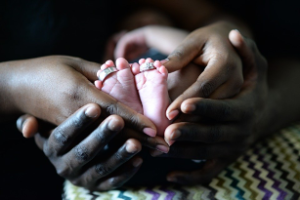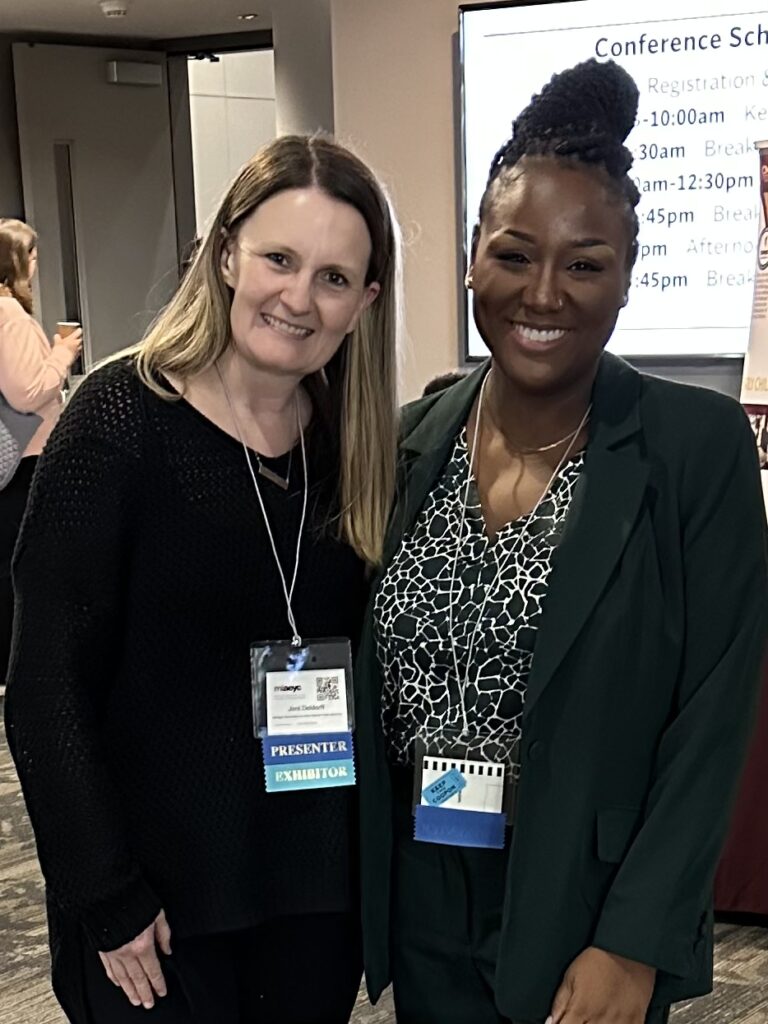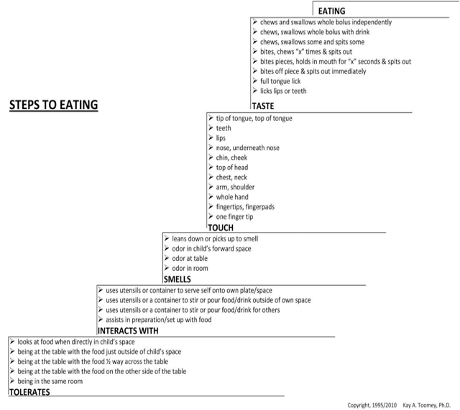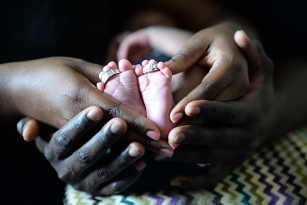Introduction
Reflective Supervision/Consultation (RS/C) has been widely recognized as a key component in the provision of quality infant mental health (IMH) informed services. RS/C can be described simply as a “relationship for learning” (Shahmoon- Shanok, 2006, p. 343). Just as we know that babies can only learn and grow in the context of relationships, we believe that the same is true for professionals.
Shanok, 2006, p. 343). Just as we know that babies can only learn and grow in the context of relationships, we believe that the same is true for professionals.
RS/C is a time for supervisees to examine their own reactions to the work with vulnerable babies and families and to use their new understanding to inform the services they provide. As supervisees experience (and are invited to reflect on) their own learning and growth in the context of the supervisory relationship, they are able to harness the power of relationships in their own work with families. As supervisees begin to feel safe, known and understood by their supervisor, they may find they are better able to quiet their inner experience, allowing more openness and curiosity about the experience of the baby and of the parent(s). As the parent (or caregiver) is able to feel seen and known with the service provider, the parent may find that more space is available to consider the perspective of the baby. In infant mental health work, this relational occurrence is described as the parallel process. Essentially, the parallel process describes the way in which relationships impact relationships.
In this field, it has come to be expected that direct service professionals are aware of how their relationships are impacting their work with the baby and his/her relationships with primary caregivers. This article will argue for an expansion of our thinking for a more comprehensive parallel process. This includes the assertion that it is best practice for leaders of programs, organizations and systems to have the opportunity to experience RS/C in order to advance this systematic awareness on behalf of babies and the adults who care for them.
Reflective Supervision/Consultation has become a crucial support for professionals in many settings, including early care and education, home visiting, infant early childhood mental health consultation, early intervention, behavioral health, general mental health here and many more. It seems that funders and organizations have begun to recognize its value for frontline workers and, though less often, for their direct supervisors. However, the concept, for leaders in policy and program administration, has not yet been fully embraced. There are likely many reasons for this gap in professional support. First, building RS/C into systems and providing it to all employees does come at a financial cost. If the organization is not yet convinced of the value for those not providing direct services, it may be even more difficult to rationalize the additional cost of paying for qualified providers and the staff time that is spent in RS/C. Second, typically the conversations, published articles and research about the value of RS/C has centered on service providers and the direct impact on babies and families. This could give the false impression that its value is limited to the very immediate relationships between provider and family, and provider and supervisor. Lastly, for those leaders who did not enter into the workforce with a human services or clinical background, the idea of RS/C as a way to reflect on one’s own thoughts and feelings may feel foreign and uncomfortable. It may, in fact, not align with their values and beliefs around a leader feeling the need or pressure to be strong, tough and already possessing the answers.
If we remember the core IMH principle that all learning and growth happens in the context of (safe, healthy) relationships and we believe that relationships impact relationships, then it seems logical that the need for RS/C would not stop with direct service providers and supervisors. In the absence of RS/C, how will a leader have the space to explore the work in more depth, to manage annoyance at a particularly stubborn employee, to practice slowing down and listening deeply to one’s own internal process as well as that of the team? How will the leader be allowed to experience the vulnerability that inevitably arises when one is on the cusp of learning something new that might require them to change their practice? What is lost if one does not have the support to venture into that new territory of learning? Taken one step further, if this leader does have RS/C, but the leader’s supervisor does not, then what happens to the parallel process?
Ultimately, how are those we serve impacted by this lack of reflection at the highest levels of a system? We believe it is the babies and families who will inexorably bear the burden of this cost.
These are important questions that lead us to assert that all professionals in the infant and early childhood system, including and arguably especially leaders, should be receiving consistent, relationship-based RS/C.
What Makes A Good Leader in Infant and Early Childhood Mental Health (IECMH) Systems?
First and foremost, leaders in IECMH systems are charged with keeping babies and families in mind, even though they are in a distanced role from them. As policies for service provision and staff development are created and implemented, strong leaders should be asking themselves for nearly every decision, “How will this impact the infants, young children and families we are serving?” In order to allow for this space to consider the vulnerability of babies and families, leaders must be willing to look inward and make space for their own sense of vulnerability. It can be difficult to reflect on our own early experiences of feeling powerless and voiceless. And yet our ability to do so allows us to hold deep empathy for those we serve, a key trait of quality service provision. Second, leaders at all levels must be attuned to the staff and teams they lead: What are their strengths and areas for growth? How do they best learn and grow? This level of attunement requires careful observation, listening, the ability to stay open to new information and integrate it into one’s thinking and decision-making.
The final skill, though we acknowledge there are many more, we believe is essential to strong leadership is awareness of one’s own biases; biases related to race, gender, sexual orientation, religious beliefs, political ideology, parenting, etc. Each one of us interacts with the world through our own unique lens, which is inevitably tinted by our life experiences. As a result, explicitly and implicitly, we assign value, prioritize, and make decisions based on our own values and beliefs. As a leader in a system, it is critical that one is aware of these values, beliefs, and biases and how they impact the creation and implementation of policy and program administration. RS/C offers the rare space to identify and examine these biases with a trusted other. Intentionally doing so creates the opportunity to not only recognize differences between self and others within and throughout the system, but also to identify ways to capitalize on these differences in order to enhance each layer of the system. This allows leaders to navigate the complex relationships within agencies, departments and organizations more effectively and efficiently to ultimately offer the highest quality supports and services for families.
RS/C with a consistent and skilled consultant allows a supervisee/consultee to engage in careful and thoughtful exploration of the work. It invites supervisee/consultees to be curious about the experiences of others and about their own experiences. Carefully placed reflections and questions invite supervisee/consultees to consider blind spots, things they may have missed, and perspectives not yet considered. It seems to us an obvious conclusion that RS/C is immensely beneficial for any leader, and especially for those involved with systems and programs serving infants, young children and families.
Next, we will share our work together as an illustration of how RS/C benefits leaders and systems in powerful and pivotal ways. We offer our story with the hope that it will inspire you to consider your own work and the ways in which RS/C already has been, or could be, beneficial.
Our Reflective Process
When we began our reflective consultation experience together, we both came firmly grounded in IMH principles. We share a passion for and commitment to supporting babies, young children and families. Because of this, we were able to start with a shared language and perspective. What felt unique was that Meghan was no longer working directly or even closely with children and families. Part of her new reflective work became bridging her felt experience with parent-child relationships and attachment frameworks to her systems work. This intentional linking over time helped us consider the eventual impact of Meghan’s work on the vulnerable young children and families whom the system serves. What felt similar was being rooted in relationship, development and the power of the parallel process. For example, when Meghan tapped into feelings of being overwhelmed with new professional expectations of her and her own evolving professional needs, we were able to easily make connections and contemplate how the baby is impacted when a parent’s expectations and capacity to offer support may shift along with each developmental milestone, depending upon the extent of how the parent’s own needs are being met.
At other times, we did not explicitly link our work to a baby or family and instead relied on our trust in the parallel process in different ways.
There is another way of conceptualizing “the baby” in policy and systems work that is also useful. The baby represents, among other things, vulnerable persons or populations who do not yet have a voice, but whose needs are clear.
This can be found either through data or anecdotally. For example, looking at the data that infants, toddlers and preschoolers are expelled from child care and preschool at 13 times the rate of children K-12 combined, and further that Black boys are expelled three times more than their white peers, it is evident that young children, and specifically African Americans, have a deep and complex experience that calls for radical systems change. This can feel like an enormous and daunting task for systems leaders to undertake. RS/C offers the space to support leaders in recognizing and processing evocative emotions that can result from startling data such as this in order to re-energize their own sense of agency, to stay connected with those in the system who are muted and disempowered, and to keep this work moving forward.
The following excerpt exemplifies how we used the reflective space to support Meghan in her role as a leader in a large system. This particular example is in relationship to Meghan and her team of colleagues; however, these concepts hold true to any variation of systems relationships.
We began our first session in person but most of the subsequent sessions were done virtually. This conversation took place about two years into our relationship. A foundational relationship had been built for exploration and growth together and we had settled into a comfortable rhythm during our monthly RS/C sessions.
Meghan’s Perspective
“Our ability to be daring leaders will never be greater than our capacity for vulnerability.” (Brown, 2018, p 11)
My first experience of professional reflection was during my work as an Infant Mental Health home-based therapist. It was emotionally intense, intimate and clinical. This was also my introduction to the felt experience of RS/C. Often in the midst of overwhelmingly evocative emotions such as grief and despair, secondary trauma and hopeless incompetence, RS/C offered me the space to learn how to lean into the vulnerability of really feeling these emotions instead of running from them. I learned that only then could I regain a sense of organization, piece together a coherent narrative and most important, guide my work with the babies and families I was there to support. The magic of the parallel process came to life, and with it came the realization that RS/C is the unique vehicle to explore it. This experience was foundational to discovering and tapping into my best professional self. Therefore, when I found an opportunity to move into systems work, my biggest fear was to lose touch with the families, with “the baby” and with this reflective side of me. I knew I would need to find a new way to meet this professional need in this leadership role. For me, this meant finding a RS/C provider who could support me in this new systems world.
It may seem obvious, but one of the first lessons I learned is that systems are simply made up of people, and thus innumerous relationships. Therefore, the same IMH relationship-based principles apply — parallel process, rupture and repair, and the need for authentic connection to inspire high-quality work. This realization gave me comfort. I appreciated the familiarity of those IMH frameworks and recognized that working at a systems level required innovative ways of executing them in this new environment. As I began my new leadership role, I also embarked on a new reflective relationship with Faith, quite literally.
“In the absence of authentic connection -we suffer.” (Brown, 2018, p. 25)
As I began this new season of my career, I believed that I had a plan for how I could maintain my own professional need for connection. I knew this was a crucial element I needed in order to meet expectations set for me and guide my work with others. However, as the work progressed, I noticed that I continued to miss the deeper emotional side of the process; the powerful experience of holding and “being with” others in a more profound way and of myself being seen in a more authentic way. Because of my deep appreciation of the parallel process, I quickly recognized that this void had begun to negatively impact my work, one of my greatest fears. This prompted me to reevaluate what I needed in order to be able to be more authentic and effective.
My fear of failure was realized and exposed during a particular meeting when I felt that I wasn’t communicating effectively with my team. I felt reflectively rusty and that was a big red flag. Working with my team, familiar thoughts and feelings flared up in my chest like a wave of heartburn. “What if I’m not a good enough leader? What if I can’t give my team what each of them needs to do this work well? What if I fail at finding a way to keep this work going?” I began to internalize the notion that if I was not a good enough leader in this state systems position, if I couldn’t meet the needs of my team, the consequences would be exponentially deeper. If I was not able to find a way to sustain this work, the consequences would be exponentially greater. The weight of responsibility washed over me, and I felt overwhelmed not only by the needs of the metaphorical baby, but by the thousands of babies all over the state who would suffer if I was not enough. That narrative was paralyzing. I felt stuck, unable to even prioritize what task to begin next.
I brought all of these complex feelings and thoughts to Faith during our next session. I didn’t yet know how to organize them, but I trusted that by leaning into my vulnerability and sharing this in our reflective space, Faith would contain and validate these overwhelming emotions in a way that allowed me to process each of them, safe from judgment. And by doing so, albeit uncomfortably at times, only then could I join in her wonderings to move me from rigidity to action.
Faith’s Perspective
In working with Meghan, I found myself wondering: How do those who lead embrace vulnerability? What do they need from us? How do we encourage their willingness to dip into the reflective space, into their emotional experience, on behalf of the babies, families and staff they serve? How do I use the familiar frame of RS/C to support Meghan in her leadership role? Over time, Meghan and I created a shared language that allowed us to explore all of these dimensions of the work together.
Meghan’s particular experience felt so familiar. Who among us has not felt like the world, the systems we work within and their problems, are so big and we are so small? I am aware that when we are working within complex systems, it can be hard to slow down, to focus on one thing and organize our many layered thoughts and feelings. Working in large systems requires us to always be holding many perspectives and needs in mind, to be thinking on our toes, and to be willing to take risks. It can feel overwhelming and heavy. As she talked, I noticed a feeling rising within me that paralleled Meghan’s. If these feelings had words, they would say to me, “Oh gosh, this is too big. I’m not sure how to help. Maybe another consultant would know what to do.” I had been here before, many times, and I knew I could use my own experience to inform me as I supported Meghan.
When Meghan quieted and gave me the cue that she was ready for me to respond, I first took a deep breath. I allowed a few moments of stillness and quiet. Once we both had a chance to quietly breathe and re-center, I reflected to Meghan the emotional experience I heard her name — a sense of feeling overwhelmed and how that was leading her to feel an intense sense of urgency. She agreed that this was how it was feeling to her, and that she was having a hard time regulating and organizing her thoughts. This felt uncomfortable for her, as she was confused and could not figure out next steps when she was in this place. As Meghan continued to describe the pressure she was feeling and the sense of being lost in all of the responsibilities, I was reminded of times in the past when she had come to our sessions with similar feelings. I had walked with her before through this process and knew she possessed the capacity to see herself through. Since this emotional journey felt familiar, I decided to share that observation with her and wondered what she thought about that. She immediately seemed to calm; her shoulders relaxed and she took a deep breath. I asked her what she was thinking and feeling as she remembered past conversations we had. Meghan said she remembered that this is a familiar place of initial anxiety that she goes to, and she always finds a way through when she has the time and space to process. I wondered with her if perhaps she comes to this place often because of how deeply she cares about the work, about her colleagues, and about the babies and caregivers she knows her staff are impacting. Yes, she said, of course. As we talked, she realized this place of feeling overwhelmed was not something she needed to fight her way out of. It gave her important information. It reminded her that she was feeling strongly about something, and it offered her the opportunity to ground herself in her passion for the work. Our deeply felt desire to be helpful and make a difference for babies and families can be overwhelming, and it can also be energizing. Once she felt like she had made sense and found some meaning in her strong reactions to this particular situation, her next steps became clear to her. As her RS/C provider, I had the honor of holding the space while she made her way to a new place that allowed her to make a plan and feel empowered.
Shifting Outcomes/Resolution
RS/C is “A relationship in which strengths are emphasized and vulnerabilities are partnered.” (Shahmoon-Shanok, 2006, p. 343)
Meghan’s reflective experience was very much rooted in the attachment-informed developmental need for a secure base — she needed to touch the wall of being in the reflective space in order to hold the emotional sense of urgency and discomfort of those doing the work directly with young children and the adults who care for them. She needed to find the balance of keeping the flame of urgency present, and yet not allow it to get to a point of overwhelming paralysis. This sense of urgency driven by the immediate needs of all of those babies, of their rapidly developing brains and attachment relationships, can often dampen with the distance and slow-moving evolution of systems work. Meghan was also searching for a way to continue to have hope and agency in order to effectively support the professionals within her system who are responsible for nurturing our babies and young children and their families.
Once she was able to “touch in,” to settle into that familiar and safe reflective space, she could then mentally prepare differently for the next team meeting. Here, she could foreshadow the possible triggering of the familiar internal narratives of self-doubt and incompetence. With the element of surprise inhibited, she could prepare a subtle regulation exercise that could re-ground her in that moment. During the next meeting, when the familiar feelings began to percolate, Meghan was able to respond rather than react. She was able to recognize the physical sensations, name the parallel emotions, and lean into and contain them in a more controlled way. This allowed her to have the emotional energy to attune to the needs of the team, rather than expending that energy managing her own emotional response. As a result of this mental shifting, she was able to hear, validate and meet the needs of the team more effectively. This galvanized her belief that the responsibility of the growth and development of the team begins with her own willingness and capacity to embrace vulnerability.
In our further reflections, we wondered together what the consequences may have been if Meghan had not had the opportunity to process her emotional reactions through RS/C. What would her actions have looked like had she gotten stuck in the emotional mud of negativity? Certainly, it would have taken much longer, if ever, for her to effectively identify her own needs in order to be able to see more clearly the needs of the team. Undoubtedly, it would have led to creating patterns of miscommunication, rigidity, perhaps even feelings of rejection on both or all sides of the parallel process. Regardless of the specific path, we are certain that without the space to intentionally reflect, the negative reverberations would have been felt by many, including the babies and families we work so tirelessly to serve.
Conclusion
The familiar phrase, “You can’t give what you don’t get,” still holds true in systems work. How can those who lead learn the value of leaning into vulnerability in the absence of having that repeated felt experience? Direct service providers and their supervisors are regularly asked to venture into the reflective space with a trusted mentor in service of their work with vulnerable babies and families. But what about those who supervise them?
It is imperative for those creating policies and practices to keep “the baby” and all of the corresponding relationships in mind. Having access to RS/C space allows leaders to tolerate discomfort, mistakes, rupture, and vulnerability, all of which are necessary to access creativity, attunement, growth and mitigate bias.
Over the past two decades, the IECMH field has evolved to embrace RS/C as best practice for many varied roles. We believe the same expectation and support should exist for systems leaders as well. Relationships impact relationships, and systems leaders will always be a part of the relational orbit surrounding direct service providers, families and babies. Therefore, “how they are,” and not just what they do, matters greatly. RS/C for leaders is a crucial strategy that needs to be woven throughout all levels of the system if we are to continue improving quality and outcomes in IECMH-informed services for our little ones and those who care for them.
References
Alliance for the Advancement of Infant Mental Health. (2018). Best practice guidelines for reflective supervision/consultation. Retrieved from https://www.allianceaimh.org/reflective-supervisionconsultation
Brown, B. (2012). Daring Greatly. New York, NY: Penguin Group (USA) Inc.
Shahmoon-Shanok, R. (2006). Reflective supervision for an integrated model: What, why & how? In G. Foley & J. Hochman (Eds.), Mental health in early intervention: A unity of principles and practice (pp. 343-381). San Francisco: Jossey-Bass.


















